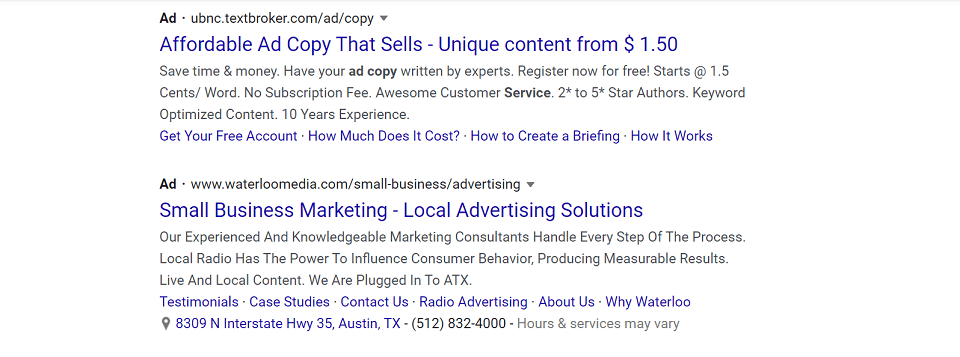Just imagine how much more efficient your lead management process can be if you integrate AI chatbots with your Customer Relationship Management (CRM) system.
In this blog post, you’ll discover step-by-step instructions on how to implement this technology to streamline interactions, capture leads effectively, and nurture your prospects.
We’ll explore the benefits, tools, and best practices to maximize the potential of AI chatbots within your existing CRM system.
By the end, you’ll be able to achieve a more productive and efficient lead management process.
Understanding AI Chatbots
These automated virtual assistants use natural language processing to engage with users, answer questions, and streamline communication.
By simulating human-like interactions, AI chatbots enhance customer experience while improving lead management efficiency.
What are AI Chatbots?
AI chatbots serve as intelligent tools that converse with users via voice or text, mimicking human behavior.
They are designed to assist in various tasks, ranging from scheduling appointments to providing instant responses to customer inquiries.
When used optimally, these tools can automate interactions that would otherwise need someone on your team to step in live.
Benefits of AI Chatbots for Lead Management
AI chatbots can enhance lead management efficiency and effectiveness.
These chatbots work 24/7. They ensure immediate engagement with potential leads, even when your physical office is closed for the night.
This not only increases customer satisfaction. It also helps you capture more leads by eliminating wait times and enhancing follow-up.
Chatbots can qualify leads through targeted questions, allowing you to focus on high-priority prospects.
By automating routine tasks like data entry and follow-ups, you free up your time to nurture relationships more proactively.
Choosing the Right CRM
Your choice of CRM should align with your business needs, workflows, and the specifics of how you plan to use chatbots for enhanced customer engagement.
A well-integrated CRM can streamline processes, boost productivity, and offer valuable insights into your lead interactions.
Key Features to Look for in a CRM
Before getting started, map out what features you most need to support your business processes.
Some features to look for include:
- User-friendly interface for easy navigation
- Robust data analytics and reporting tools
- Customizable lead tracking and segmentation
- Automation capabilities for routine tasks
- Effective multimedia communication tools
- Integration options with other platforms, including chatbots
The right CRM will serve as a comprehensive hub for managing your leads efficiently.
Compatibility with AI Chatbots
Your CRM must support seamless integration with chatbot tools to maximize their benefits.
You’ll want to ensure a smooth flow of information, so chatbots can capture leads in real-time and update customer records automatically.
This integration leads to a more cohesive customer experience.
You want to have chatbot interactions and CRM data working together to nurture leads and improve conversion rates.
How to Integrate AI Chatbots with Your CRM
When you integrate AI chatbots with your CRM system, your entire lead management process will be more efficient.
This integration empowers you to:
- Automate interactions
- Capture lead information seamlessly
- Activate immediate response capabilities
And you can achieve all of this while ensuring that your client database is accurate and up-to-date.
When deployed right, you can streamline workflows and drive better engagement with potential customers.
Step-by-Step Integration Process
Follow these simple steps to integrate CRM and chatbots effectively:
| Step | Description |
| 1. Select a Chatbot | Choose a chatbot platform that integrates easily with your CRM |
| 2. Generate an API Key | Obtain an API key from your CRM to enable data exchanges |
| 3. Configure Settings | Set up chatbot settings to match your lead criteria and objectives |
| 4. Test the Integration | Run tests to ensure the chatbot seamlessly interacts with your CRM |
| 5. Monitor and Optimize | Review performance data and optimize chatbot responses regularly |
Common Integration Challenges and Solutions
Common challenges you might run into include data inconsistency and technical glitches.
However, by proactively addressing these issues, you can maintain a smooth operation.
With the proper preparation, you can overcome integration hurdles like inconsistent data and connectivity problems.
You’ll want to conduct thorough testing before going live. Be extra sure that your team is well-versed in both the chatbot and CRM functionalities in advance.
Be sure to schedule recurring reviews of the integration. This is how you can identify issues quickly and refine performance over time.
How to Optimize Chatbot Interactions
Not all interactions with chatbots yield the desired results, which is why you need to proactively work to optimize these interactions.
A well-optimized chatbot not only improves user satisfaction but also enhances lead engagement and conversion rates.
By carefully analyzing user behavior and refining conversation workflows, you can ensure that your chatbot serves as a valuable asset in your CRM system.
Craft Effective Conversation Workflows
The quality of your conversation workflows can make or break your chatbot’s effectiveness.
To craft effective flows, start by identifying common user queries and mapping out a logical dialogue.
Ensure the bot’s responses are concise and clear.
You want it to guide users into your funnel, towards actions like scheduling a demo or pushing a product inquiry to your sales team.
Use Data for Personalization
Personalization is key to enhancing user experience and increasing engagement.
By collecting and analyzing data from previous interactions, you can tailor responses to individual users based on their preferences and behaviors.
This targeted approach will create a sense of familiarity, making users feel valued and more inclined to convert.
Tailored experiences not only boost user satisfaction but also streamline the lead management process.
By integrating your chatbot with your CRM, you can use data like past purchases, interests, and engagement history to create customized interactions.
The more personalized your chatbot’s responses are, the better it can guide prospects down the sales funnel.
Tips for Maintaining Seamless Communication
To ensure your CRM/chatbot integration is effective, focus on the following:
- Set clear objectives for your chatbot’s role in communication
- Regularly review conversation logs to identify areas for improvement
- Gather feedback from both clients and your sales team
- Ensure a smooth transition for customers from chatbot to human agents when doing hand offs
With these tips, you’ll create a more streamlined communication process for prospects.
Regular Updates and Training for Chatbots
To maintain effective communications, you’ll need to keep your chatbot updated.
Regular training sessions will help it adapt to new trends, language changes, and customer preferences.
This is how you can ensure that its responses remain both relevant and accurate.
The Role of Human Oversight
Human oversight can greatly enhance the quality of chatbot interactions and provide a safety net for complex inquiries.
People can (and should) intervene in conversations where the chatbot may fall short.
Start by analyzing chatbot interactions alongside sales team input.
With this information, you’ll be better equipped to refine your chatbot’s performance while ensuring that customers receive personalized assistance when needed.
Factors Influencing Lead Conversion
You’ll want to stay abreast of what factors affect conversion, and optimize those continuously.
Key elements that impact conversion rates include:
- Quality of leads
- Response time
- Personalization in communication
- Follow-up strategies
By enhancing these areas, your lead conversion success rate will improve significantly.
Analyze Customer Interactions
Factors such as engagement level, frequency of conversations, and customer satisfaction directly influence success with leads.
Once you analyze these interactions, you will better understand what resonates with your audience.
That, in turn, will help you tailor your chatbot responses and improve lead nurturing.
Identify Key Performance Metrics
If you want better customer insights, you’ll have to establish what your main performance metrics are.
These metrics provide quantifiable data to assess the effectiveness of your AI chatbot and its impact on conversions.
These metrics will include things like:
- Lead response rate
- Conversion rate
- Average time-to-close
- Customer satisfaction scores
By assessing these areas, you can pinpoint strengths and weaknesses within your existing system.
Then, you can make informed adjustments that drive better results and deepen customer relationships.
Conclusion
You can significantly enhance your lead management processes by integrating AI chatbots with your CRM system.
By automating interactions and gathering valuable data, you can streamline your sales funnel and improve efficiency.
Be sure to choose a chatbot that aligns with your business goals and seamlessly integrates with your chosen CRM system.
Regularly monitor performance and adjust your strategy as needed to maximize the potential of this technology.
By doing so, you will empower your team to focus on high-value tasks that ultimately drive growth.
Tommy Landry
Latest posts by Tommy Landry (see all)
- Best Semantic SEO Consultants: Why the Foundation Matters for AEO and GEO - October 28, 2025
- AI-Powered SEO Agents: Why They Fall Short - October 21, 2025
- Law Firm SEO in the AI Era: Why Future-Focused Attorneys Need More Than a Legal SEO Agency - October 16, 2025





